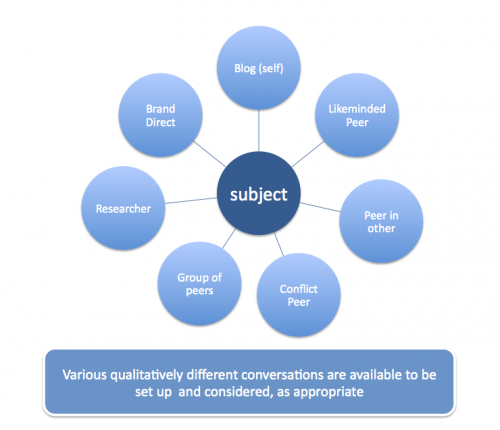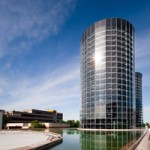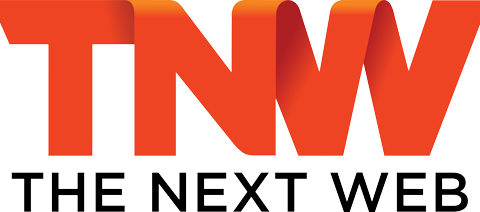Dr Bob Cook
When confronted by all the possibilities and potential outcomes that exist in a situation, making the right decisions can become difficult and even impossible. As a result, the ability to reduce this situation to a more limited set of probable and desirable outcomes is an important skill that the human mind has acquired over the millennia, and is something that is central to the continued success and development of the species. It is also something that is very important for brands to be able to do in order to ensure they make the right decisions that secure their own success and development. Having some idea of what will happen when a new product or service is launched is vital when planning how to best position it and then support its growth. Get this wrong, and considerable amounts money and positive brand equity can end up going the same way that a lot of New Coke did back in 1992 – straight down the drain.
This ability to provide meaningful predictions of what the future might look for our clients is a key role for the market research industry and is one that must be approached with care and respect if it is to be done well. As we have become well aware of the widely accepted and applied wisdom of behavioural economics, behaviour and attitude relating to products and ideas is more likely to be shaped by the vagaries of context and human emotion than it is to be predicted by the steely logic of system 2 thinking. As such, it becomes increasingly obvious that the inclusion of real life context in research structure is important in developing a realistic and useful version of what the future might have in store for a client’s ‘next big thing’.
BT Infinity Launch, 2009
In 2009 BT was preparing to launch ’Infinity’ – its new superfast fibre optic broadband product – into a UK market that was largely defined by its competitor Virgin Media who had already established a category dialogue based on headline speed and technical specification. Stars such as Samuel L Jackson were on TV screens and billboards proclaiming the ‘Mother of All Broadbands’ in terms of numbers of megabits per second and BT sought to position itself in a way that aligned more with the real experiences and difference that fibre optic broadband could bring to people’s lives.
At this point, BT approached Firefish to do a piece of work that would inform the development of a market positioning and launch strategy based on real and motivating benefits offered by their new superfast broadband product. Implicit in the project brief was the need to develop an understanding of the actual positive impact that the new technology had on people’s lives. The ultimate aim for BT was to develop communications that would engage and motivate people as well as resonate with both the actual experience of the Infinity product and the needs of its potential customers. To do this well there was therefore a need to see what happens when the product (rather than simply the idea of the product) were experienced in a real world context (rather than one created for the convenience of the research itself).
To the benefit of all concerned BT was in a position where it had the technology available for trial and the time and inclination to let the objectives – rather than other factors – determine the research structure.
An Intelligent Approach
The philosophy that underpinned everything about this piece of research was to keep everything as closely aligned to reality as possible. Real world context was seen as central to the success of the project and was therefore built in to every aspect of the methodology. The overarching desire was to see what actually happens to people when they have fibre optic broadband in their lives – rather than asking them to time travel and project themselves into a theoretical future world of fibre delight.
With this in mind, we incorporated real world context in a variety of ways:
- Realistic experience – the study considered 40 households in who were installed with BT Infinity. The product was experienced from installation onwards in the context of a household going about its varied day to day business.
- Realistic feedback – people were asked to feedback using video and text enabled blogs on the Firefish Aquarium™ platform. The research agenda was left deliberately open and direct questioning was avoided. The reason for this was to allow an organic personal dialogue evolve under the influence of Infinity – rather than under the influence of the research questioning itself. Video was specifically chosen as a communication medium as it captures more of the associated life context and emotion attached to people’s postings.
- Realistic timescales – new product research can often rely largely on people’s immediate reactions to a new idea as a concept. An idea may seem interesting when first encountered due to its novelty alone. The same is often true of innovative new products that have a brief moment in the sun – before finding their way to the cupboard under the stairs – or worse. Just ask most people who invested in a home photo printer. With this in mind, the research was designed to take place over a 12 week period which would allow us to consider the initial box fresh excitement, the honeymoon period and the longer term impact of Infinity once it had been assimilated into daily life and routines.
The Outcome
Over the course of 12 weeks the 40 household generated a lot of feedback highlighting many benefits of having fibre optic broadband. At the end of the research period, people were also asked to sum up ‘The Infinity Difference’ in a short video clip – again this was left very open and answers were suitably diverse.
A variety of interesting themes arose in terms of the impact that Infinity was having at an experiential and emotional level. One that seemed both important and consistent across the sample was that of the ‘Happy House’, where we were seeing people enjoying time at home more as a result of fibre optic broadband – better end experiences, less fighting over internet related applications, less anxiety over service insufficiency. In short there was more peace, harmony fun and enjoyment. While this seemed a great place to be able to position Infinity, it also felt somewhat generic and lacking in link to the actual product itself.
This then led to idea of the ‘Multiplied Internet’ – multiple high speed internet end experiences all happening concurrently – rather than simply one single ‘Mother of all Broadband’ experience. This was seen to sit at the heart of many video blog posts and comments describing the ‘Happy House’ of BT Infinity during the research.
Of particular importance in terms of conveying this message to the stakeholders and key decision makers at BT was a wonderful video blog clip that encapsulated the idea of the ‘Multiplied Internet’ as the viewer is taken on an engaging tour of the subject’s home in which he turns on 6 different high quality AV streams and has them all running at once in real time.
This single clip communicated the key learning of the project in a simple and credible way that inspired BT to commission launch advertising based on the project insight and provided direct creative inspiration to the agency team at AMV London who were tasked with creating Infinity launch TV executions.
The work inspired by the project remains part of the ongoing BT Infinity communication campaign that has seen the brand consistently exceed its ambitious sales targets and the work itself top the Adwatch league table in UK trade magazine Marketing.
The Advantage of Building in Context
The success of this project highlights the value of building context back into qualitative research in a way that is appropriate to the realities of the project. While researchers may not always have the luxury of generous time scales and fully functioning product prototypes, clever project design and use of technology can move research away from simply testing theoretical ideas in research led time frames and environments, to a situation where ideas can position themselves in the context of the actual world that they will exist and compete in.
- Allow an idea or product to be considered or experienced in an appropriate environment – not a research dictated one
- Allow people to feedback in that same environment using relevant technology to facilitate this
- Build research timelines that allow an idea to evolve and find its own position in people’s lives – rather than be force positioned based on preconceptions and assumptions
- Give people time to formulate considered responses relating to ideas – rather than only allowing them to give their reactions
- Capture the real benefit of an idea or product in its own natural habitat and use this to inspire action
Dr Bob Cook, Director of Innovation and Inspiration, Firefish



